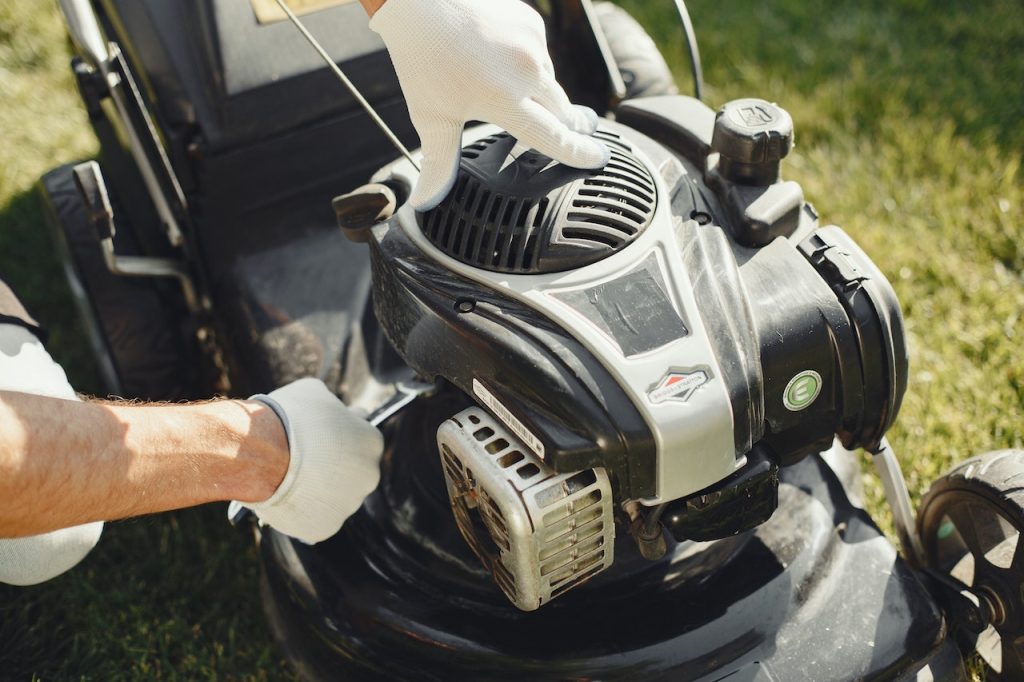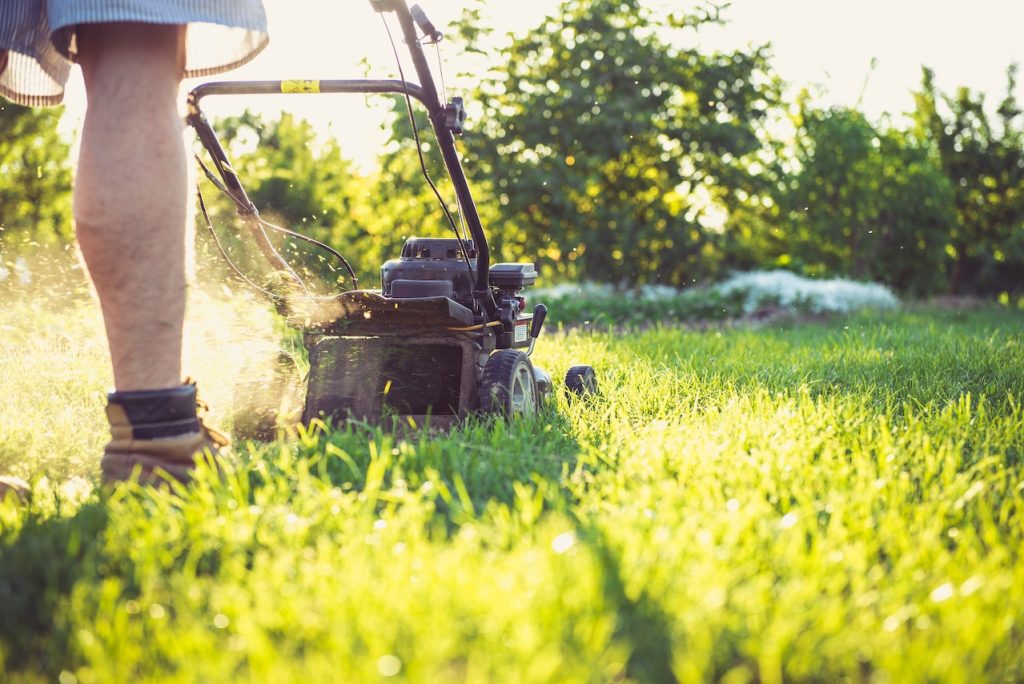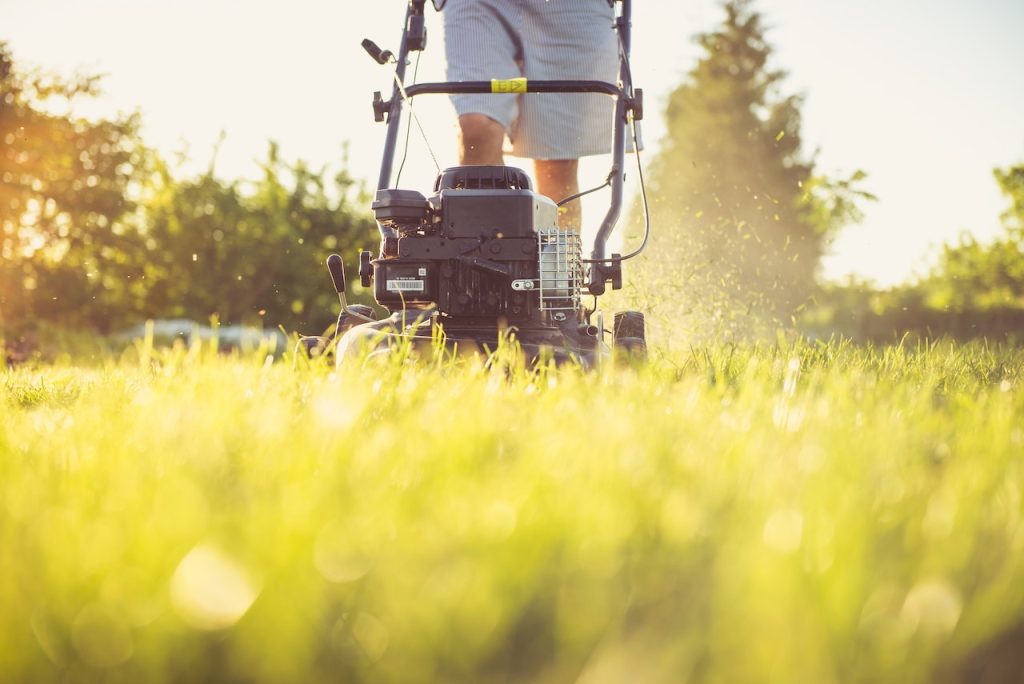Picture this: It’s a sunny Saturday afternoon, and you’re ready to tame the unruly jungle that is your lawn. You pull out your trusty lawn mower, only to find it refusing to start or, worse, sputtering to a stop halfway through the job.
Sound familiar?
Fear not, dear homeowner! This comprehensive guide on essential lawn mower maintenance tips will keep your front mower in tip-top shape and help you avoid those dreaded mid-mow meltdowns.
A well-maintained mower translates into a healthier, more attractive lawn that will be the envy of your neighbors. So, join us as we go over the critical steps every mower owner should take to keep their lawn and machine in pristine condition.
Read the Owner’s Manual
The first step in proper lawn mower maintenance is understanding your machine. While it may seem tedious, taking the time to read your owner’s manual is crucial. Not only will it provide you with specific instructions for your particular model, but it can also offer valuable troubleshooting advice should any issues arise.
Your manual will likely include fault codes as well as details on proper oil type, blade replacement procedures, and other essential maintenance tasks. Keep it handy for quick reference throughout the life of your lawn mower.
If you’re still choosing the right machine for your lawn, be sure to peek at our Reviews & Comparison page.
Keeping Your Mower Lubricated
A well-lubricated lawn mower is essential for smooth operation and for preventing premature wear. Friction between moving parts can cause heat buildup and eventually lead to part failure if not adequately addressed.
Consult your owner’s manual for the recommended lubrication points and grease type. Typically, you’ll want to lubricate the wheels, height adjusters, cables, and other moving parts at least once per season or more frequently if you mow regularly.
Clean the Deck and Undercarriage
A clean mower is a happy mower. Regularly clearing away grass clippings, dirt, and debris from the deck and undercarriage prevents buildup that can lead to rust, corrosion, or impaired performance.
After each mowing session, use a hose or a brush to remove any leftover grass or dirt. For stubborn build-up, consider using a specialized cleaning tool designed for lawn mowers.
Maintain the Hooper
The hooper, also known as the grass collection bag or box, plays a vital role in keeping your lawn clean and tidy during mowing sessions. Regular inspection and maintenance of the hooper ensure optimal performance and longevity.

Empty the hooper after each mowing session to prevent excess weight on the mower and potential damage to the bag. Inspect it for rips, tears, or other damage that may affect its ability to collect clippings effectively. Replace or repair as needed to maintain peak performance.
Check and Change the Oil
Just like your car, your lawn mower needs regular oil checks and changes to stay running smoothly. Running on low or dirty oil can cause significant damage to the engine over time.
Consult your owner’s manual for the recommended oil type and change intervals. Generally speaking, you should check the oil level before every use and change it at least once per season.
Replace or Sharpen Blades
Dull blades can make mowing a frustrating and time-consuming task. They also tear the grass rather than cutting it cleanly, leaving your lawn looking ragged and potentially vulnerable to disease.
Inspect your blades regularly for signs of wear or damage. If they’re dull, you can either sharpen them yourself using a blade sharpener or replace them entirely. Either way, keeping your blades in good condition will improve your cut’s quality and extend your lawn mower’s service life.
Maintain the Air Filter
A dirty air filter can lead to reduced engine performance and an increase in fuel consumption. Depending on the type of filter your mower has, either clean or replace it according to the manufacturer’s recommendations.
For a foam filter, clean it with warm, soapy water and let it dry before reassembling it. Paper filters should be replaced once they become dirty.
Inspect and Replace Spark Plugs
Worn spark plugs can cause starting difficulties and reduce overall engine efficiency. Check them at least once per season for signs of wear, corrosion, or damage.
Replacing spark plugs is an inexpensive and easy maintenance task that can greatly improve your mower’s performance.
Keep Tires Properly Inflated

Uneven tire pressure can make it challenging to achieve an even cut, as well as cause unnecessary strain on your lawn mower’s engine. Regularly check the tire pressure and inflate it to ensure optimal performance.
Proper Storage
How you store your lawn mower when not in use can significantly impact its lifespan. Proper storage protects your mower from environmental factors such as moisture, temperature fluctuations, and dirt that can lead to rust or damage.
Store your lawn mower in a cool, dry place away from sun exposure, preferably in a shed or garage. Before storing for extended periods, such as over winter, clean the mower thoroughly and add a fuel stabilizer to prevent stale gasoline.
Disconnecting the spark plug is also recommended as an added safety measure.
Determining When Your Lawn Mower Needs Service Care
Even with regular maintenance, there may come a time when your lawn mower requires professional service care to address specific issues or perform more complex tasks. Knowing how to identify potential problems and when to seek expert help can save you time, money, and frustration.
Signs that your mower may need service care include:
- Difficulty starting. If your lawn mower is hard to start or won’t start at all despite having fresh fuel, a clean air filter, and a properly gapped spark plug, it might be time for a professional tune-up.
- Excessive smoke. A small amount of white smoke is normal when starting a cold engine or if the mower has been tilted. However, excessive or continuous smoke could indicate an oil leak, worn piston rings, or other issues that require professional attention.
- Unusual noises. Strange sounds like grinding, knocking, or squealing can indicate problems with the engine, belts, or other components. Don’t ignore these warning signs — contact a service center for an inspection.
- Noticeable decrease in performance. If your mower’s cutting power seems diminished even after following proper maintenance procedures, such as sharpening blades and cleaning the deck, it may be time for a professional assessment.
- Leaks. If you notice oil, fuel, or coolant leaks around your lawn mower, it could signal an issue with the engine or other components that need professional repair.
- Vibration. Excessive vibration while operating your lawn mower can be harmful to both the machine and the operator. This situation can stem from unbalanced blades, loose parts, or engine issues requiring expert care.
- Inability to adjust cutting height. If you find that you are unable to adjust the cutting height of your mower correctly despite having well-maintained wheels and height adjusters, it could indicate a problem with the mower’s internal mechanisms that require professional assistance.

If you encounter any of these issues, it’s best to consult your owner’s manual for troubleshooting tips or contact a local lawn mower service center for expert advice and assistance. Regularly scheduling preventative maintenance appointments, such as annual tune-ups, can also help prevent significant problems and extend the life of your lawn mower.
In Conclusion
Proper lawn mower maintenance is the cornerstone of efficient and enjoyable lawn care. By diligently following the essential tips outlined in this article, you will protect your investment and ensure that your lawn mower continues to perform at its best for years to come.
Remember, taking the time to read your owner’s manual, routinely clean and check various components, lubricate moving parts, and store your mower correctly will pay off in the long run through improved performance and reduced repair costs.
Additionally, being able to recognize when professional service care is needed can save you from unnecessary frustration and further damage to your mower.
Embrace these essential lawn mower maintenance tips as part of your regular lawn care routine, and experience the satisfaction of a pristine and perfectly manicured lawn. After all, a beautiful backyard is not only a reflection of your hard work but also a testament to the care you’ve put into maintaining your trusty lawn mower. Happy mowing!
Was it helpful?

Enamored with the world of golf Jack pursued a degree in Golf Course Management at THE Ohio State University. This career path allowed him to work on some of the highest profile golf courses in the country! Due to the pandemic, Jack began Inside The Yard as a side hustle that quickly became his main hustle. Since starting the company, Jack has relocated to a homestead in Central Arkansas where he and his wife raise cattle and two little girls.






